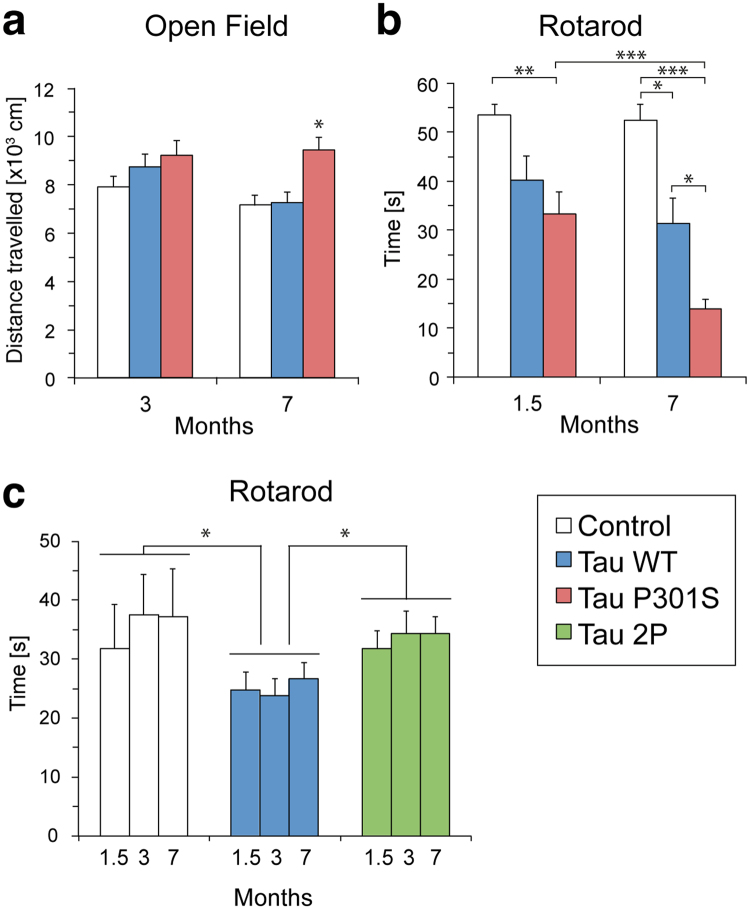Figure 2.
AAV-tau injection induces behavioral deficits: the effects of the P301S and 2P modifications. (a) Open field test performed at 3 and 7 months after AAV-tau injection, compared to the control group injected with AAV-maxFP. Data represent the distance travelled by each mouse on average, for each experimental group. (b) Rotarod test performed at 1.5 and 7 months after AAV-tau injection, compared to the control group injected with AAV-maxFP. The graph shows the average time on the rotating rod for each experimental group. AAV-maxFP: n = 15 mice; AAV-WT: n = 12; AAV-P301S: n = 13. Statistical analysis: two-way ANOVA (time × group) with repeated measures, followed by Newman-Keuls post-hoc test. Open field: group effect F(2,37) = 4.29; Rotarod: group × time effect F(2,37) = 4.38, *p < 0.05; **p < 0.01; ***p < 0.001. (c) Rotarod test to compare AAV-maxFP, AAV-WT and AAV-2P at 1.5, 3 and 7 months after vector injection. The graph shows the average time on the rotating rod for each experimental group. AAV-maxFP: n = 4 mice; AAV-WT: n = 16; AAV-P301S: n = 13. Statistical analysis: two-way ANOVA (time × group) with repeated measures, followed by Fisher’s LSD post-hoc test. Group effect F(2, 30) = 4.18, *p < 0.05.

